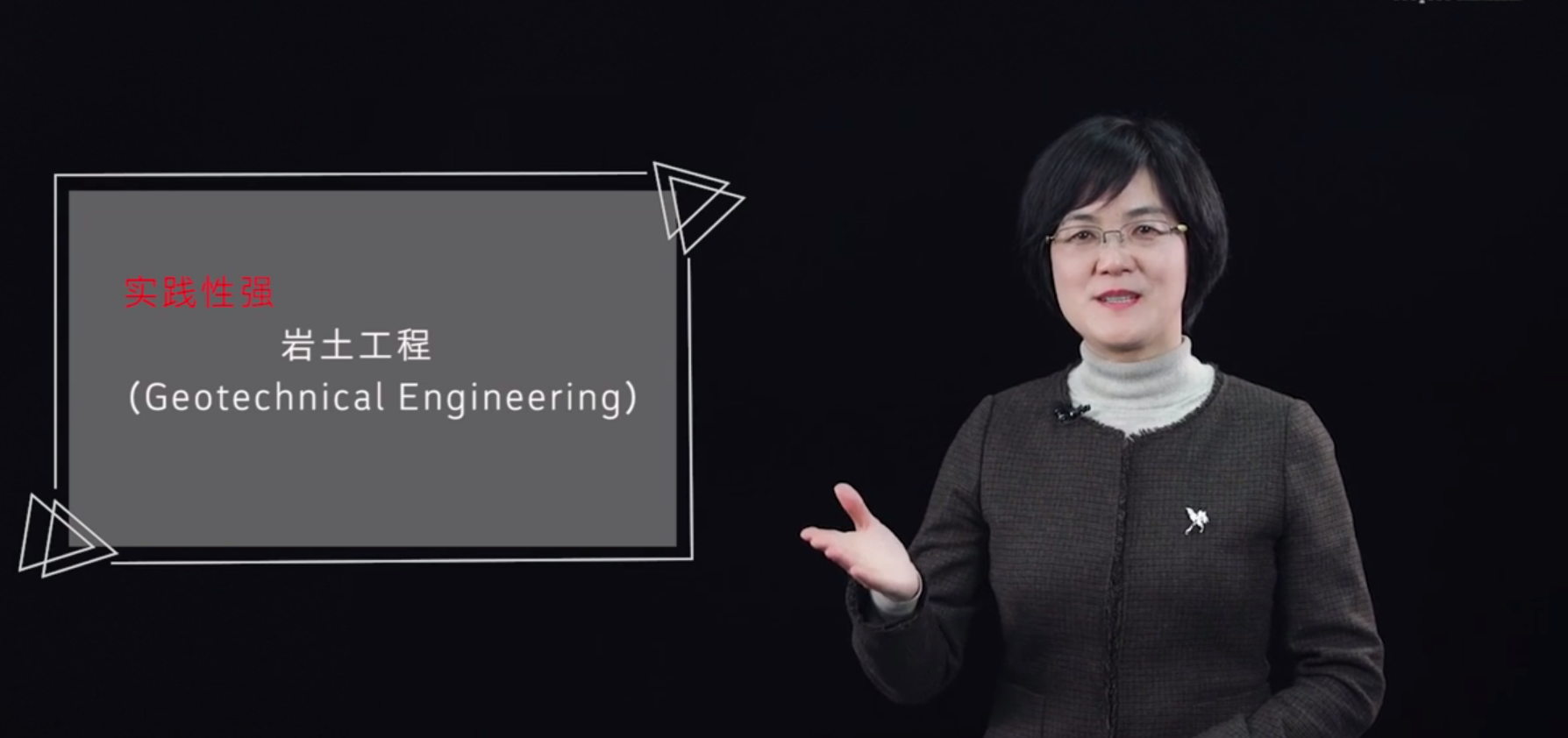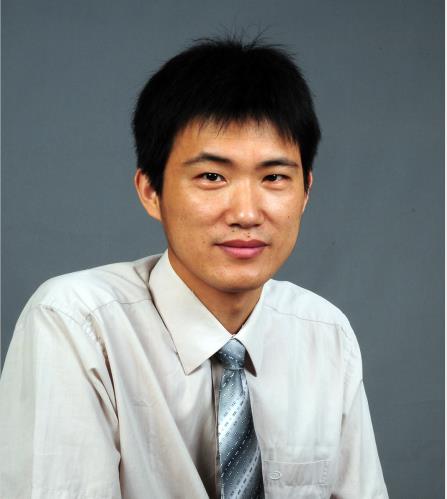
Soil Mechanics课程简介:前往报名学习

Soil mechanics is a professional basic course that uses mechanics and geotechnical testing techniques to study the engineering properties of soil.
播放:376次,课程ID:4009873

Soil mechanics is a professional basic course that uses mechanics and geotechnical testing techniques to study the engineering properties of soil.
--0.1Introduction
--Exercises
--1.1Guideline
--1.2Soil generation
--1.3.1Soil solid particles
--1.3.2Particle size distribution curves of soil
--1.4Soil fabric and structure
--1.5.1Three phase physical property index of soil
--1.5.2Conversion formula between physical property indexes
--1.6Characteristics of cohesionless soil
--1.7characteristics of cohesive soil
--1.8Soil compaction
--1.9 Engineering classification of soils
--1.10Summary
--Exercises
--2.1Guideline
--2.2Capillary phenomena of soil
--2.3Soil permeability and groundwater movement
--2.4Darcy’s law and its applicability
--2.5.1Determination of permeability coefficient
--2.5.2Determination of permeability coefficient of layered soil
--2.6Seepage force and critical hydraulic gradient
--2.7Quicksand phenomenon
--2.8.1Pore water pressure and effective stress in saturated soil
--2.8.2Pore water pressure and effective stress under seepage
--2.9Summary
--Exercises
--3.1Guideline
--3.2State of stress in soil
--3.3Stresses due to self-weight
--3.4Effective stress principle
--3.5.1Foundation undersurface pressure distribution
--3.5.2Simplified calculation of foundation undersurface pressure
--3.5.3Calculation of foundation undersurface additional pressure
--3.6.1Additional stress in ground base under vertical concentrated load
--3.6.2Additional stress beneath a rectangular foundation due to a vertical uniform load
--3.6.3 Additional stress beneath a rectangular foundation due to a vertical triangular load
--3.7.1Additional stress beneath a strip foundation under vertical uniform load
--3.7.2Additional stress beneath a strip foundation under vertical triangular load
--3.8Summary
--Exercises
--4.1Guideline
--4.2.1Soil compressibility
--4.2.2Oedometer test
--4.2.3Soil compressibility parameters
--4.3 In-situ testing of soil compressibility
--4.4.1 Calculation principle of layer-wise summation method
--4.4.2 Calculation method of layer-wise summation method
--4.5.1 Rebounding curve and recompression curve of soil
--4.5.2 Stress history of natural soil
--4.6.1 Consolidation of saturated soil
--4.6.2 One dimensional consolidation theory of saturated soil
--4.7Summary
--Exercises
--5.1Guideline
--5.2 Shear strength
--5.3.1 Direct shear test
--5.3.2 Principle of triaxial shear test
--5.3.3 Types of the triaxial shear test
--5.4.1 Mohr-Coulomb shear strength theory
--5.4.2 Limit equilibrium condition of soil
--5.4.3 Application of Mohr-Coulomb shear strength theory
--5.5.1 Unconsolidated undrained shear strength
--5.5.2 Consolidated undrained and consolidated drained shear strength
--5.6Summary
--Exercises
--6.1Guideline
--6.2.1 Basic concept of subsoil deformation and stability
--6.2.2 Basic failure modes of subgrade
--6.3.1 Critical edge pressure
--6.3.2 Bearing capacity of the finite plastic zone depth
--6.4 Prandtl’s ultimate bearing capacity
--6.5 Modification of Prandtl’s ultimate bearing capacity
--6.6 Terzaghi’s ultimate bearing capacity
--6.7 Determining bearing capacity according to code for design of building foundation
--6.8 Determining bearing capacity according to field test
--6.9Summary
--Exercises
--7.1Guideline
--7.2.1 Basic concept of soil slope stability
--7.2.2 Influence factors of slope stability
--7.3.1 Stability analysis of cohesionless soil slope
--7.3.2 Stability analysis of cohesionless soil slope with seepage flow
--7.4.1 Integral circular slip surface method
--7.4.2 Stability number method
--7.5.1 Basic concepts of Swedish strip slice method
--7.5.2 Calculation formula of Swedish strip slice method
--7.6 Bishop method with a circular slip surface
--7.7Summary
--Exercises
--8.1Guideline
--8.2 Engineering application of retaining wall
--8.3 Earth pressure on the retaining wall
--8.4 Calculation of the at-rest earth pressure
--8.5.1 Basic principle of Rankine's earth pressure theory
--8.5.2 Calculation of Rankine's active earth pressure
--8.5.3 Calculation of Rankine's passive earth pressure
--8.5.4 Calculation method of earth pressure under special conditions
--8.6.1 Basic assumptions of Coulomb's earth pressure theory
--8.6.2 Calculation of Coulomb's earth pressure
--8.7Summary
--Exercises
--Final exam

廖红建,博士,慕课《土力学》课程主讲教师和负责人,博士生导师,长期从事土力学的教学和科研工作,获得日本东海大学博士学位。国际土力学与岩土工程学会会员,中国土木工程学会土力学教学专业委员会副主任委员,中国岩石力学与工程学会理事,陕西省岩土力学与工程学会副理事长。应邀在京都大学、名古屋工业大学、新加坡南洋理工大学从事岩土材料强度变形特性研究。主持国家级、省部级等科研项目30余项,获陕西省科技进步一等奖、西安市自然科学优秀学术论文一等奖。发表学术论文200余篇,编译出版中英日文教材专著10余部。长期讲授土力学、工程地质、高等土力学等课程,致力于岩土工程的防灾减灾研究。

李杭州,副教授,博士。主要从事岩土本构关系和岩土工程稳定分析的研究;目前为陕西省岩土力学与工程学会理事,中国岩石力学与工程学会会员,地面岩石工程专业委员会委员,土的本构关系与强度理论专业委员会委员,非饱和土与特殊土专业委员会委员,湿陷性黄土专业委员会委员。主持国家自然科学基金项目、陕西省自然科学基金项目,国家重点实验室开放基金、企业委托横向课题等科研项目多项;获西安市自然科学优秀论文奖1项;参编教材5部;在国内外期刊和会议上发表学术论文40余篇,其中SCI、EI收录30余篇。